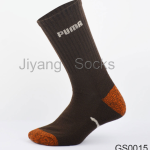Diabetic Foot
People with diabetes are at a high risk for developing artery disease, which results in a lack of blood flow to their feet. This leads to nerve damage and results in a medical condition called neuropathy, which is loss of feeling in the feet. People with diabetes refer to this as the diabetic foot. When this occurs, one runs the risk of not noticing a small cut or abrasion on their foot. While people without neuropathy would feel the pain of a scrape and treat it right away, those with neuropathy are unable to feel it and leave the injury unattended. Not properly treating a cut on the foot can lead to swelling and infection. In fact, the American Diabetes Association reports that “60 percent nontraumatic lower limb amputations occur in people with diabetes.”
It is vitally important for people with diabetes to take proper care of their feet. With early detection and proper foot care, most small injuries and cuts can be caught and treated before they get serious.
Diabetes Foot Treatment
Here are a few simple steps people with diabetes can take to keep their feet healthy:
o Wash your feet daily and apply lotion afterward
o Check your feet daily by visually inspecting them
o Trim and take care of your toenails regularly
o Make sure shoes fit properly, don¡¯t cause blisters, and protect your feet from the elements
Diabetic Sock
For many people, socks aren’t simply a fashion statement or just for warming up your toes. Socks, particularly compression socks and diabetic socks are an integral part of the treatment for medical diseases.
Many ask if there is a difference between diabetic socks and compression socks and the answer is, absolutely! Diabetic socks are completely different from compression socks in that compression socks are meant to be tight and not so thick. They are usually made from a compressing fabric such as spandex, lycra, or rubber and are meant to apply pressure in a certain area of the leg, ankle or foot.
Diabetic socks, on the other hand, are thicker, but breathable, with extra padding in the heal area. The goal of diabetic socks is to provide extra comfort to the leg and foot. They are typically loose fitting and have no seams which could cause blisters.




